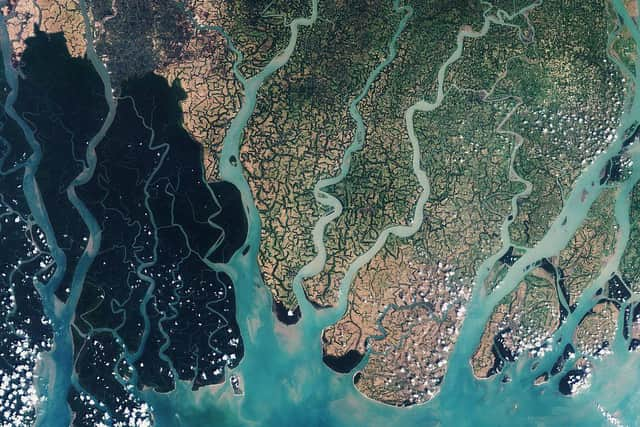COP26: The islands bordering India and Bangladesh that are going underwater
As a result, locals living there are losing their homes and livelihoods as the sea levels rise, and the salty water entering the land renders the soil unfit for cultivation.
These homes, many of which are mud structures, have neither electricity nor running water.


Advertisement
Hide AdAdvertisement
Hide AdAccording to the Global Climate Risk Index 2021, countries like India are already among the hardest-hit by rise in extreme weather events linked to climate change.
It is important to take into account that much of the global temperature rise has been driven by historically high emissions by a handful of nations, with the United States leading the pack. Currently, India is the world’s third largest carbon emitter.
Within the developing world that has now witnessed the inequitable distribution of Covid-19 vaccines, there is also a growing criticism over the hypocrisy of rich countries failing to meet their own climate commitments, asking other countries to do more.
For the vulnerable countries and communities, the issue of equity is key, as the help is needed now.


Developing countries are seeking more finance so they can move towards green sources of energy and adapt to the fast-changing climate.“I think there is now a sharp focus on finance for adaptation,” says Ulka Kelkar, director of the climate programme at World Resources Institute–India.
While countries like Denmark have announced increased climate finance for adaptation measures, experts believe the overall commitments announced so far will fall short.
Ms Kelkar adds: “If some of it comes as loans, it will make poorer countries more indebted. Then there are limits to adaptation, especially to extreme events.”
The developing countries themselves have a tightrope to walk, as along with pushing for more funding they have to respond to vulnerable communities at home now.
Advertisement
Hide AdAdvertisement
Hide AdHarjeet Singh, senior adviser for climate impacts at Climate Action Network International, said solidarity among developing countries was a missing element.
He points to the lack of planning by the respective governments to respond to the needs of the affected population in places like Sundarbans.
“I feel very nervous because of the way climate impacts are increasing,” Mr Singh said.
While civil society groups and NGOs are filling some of the gaps, it isn’t enough. Speaking about the lack of adequate climate finance, Mr Singh adds: “There is a lot of focus now, but we are nowhere near to what we need.”
- Disha Shetty is an award-winning independent science journalist based in India. She writes on health, environment, gender and their intersections. This article is part of The Scotsman and Earth Journalism Network partnership – set up by global non-profit organisation Internews.
Comments
Want to join the conversation? Please or to comment on this article.
